Of late, many peace-minded Canadians have been decrying the country’s increasing militarization, calling to mind this country’s proud peacekeeping tradition as if it was a defining feature of confederation. Unfortunately, it’s a false memory, as Canada’s peacekeeping forces weren’t formed until 1956. Its military involvements, however, go back nearly to our country’s beginning. According to Nathan R. Dirks, whose 2010 master’s thesis, “War without, struggle within,” Canada was embroiled in its first foreign conflict—the South African (or Boer) War—when the country was only 32, noting that the “perceived glory [of its war efforts] had played a part of the nation-building process of Canada.”
And lest Mennonites think that our own founding tenet of peaceful nonresistance has been upheld faithfully and continuously since the Radical Reformation some five centuries ago, the subtitle to Dirks’ thesis—“Canadian Mennonite enlistments during the Second World War”—gives the lie to that idea.
While most Mennonites know, or know of, at least one Second World War conscientious objector (CO), many could be excused for being unaware of the fact that as many as 4,500 Canadian Mennonites enlisted in this country’s military forces between 1939 and 1945. Some served as active combatants, while others did duty in the medical or dental corps; both were considered equally discreditable by the church that has done a good job of suppressing their stories over the years.
A short Mennonite history of war
The ill-fated 1534 Münster Rebellion—an attempt by radical Anabaptists to establish a communal sectarian government in the German city—was the first, and for many centuries, the only known armed action by the peaceable sect.
The next major event was the creation of an equally ill-fated self-defence league in the aftermath of the Russian Revolution. But Conrad Grebel College student Lyle Friesen noted in a 1973 essay, that “[t]he emergence of the Selbstschutz was not as sudden or unexpected as commonly assumed, for the past involvements and activities of the Mennonites clearly foreshadowed the eventuality of such an occurrence.”
Before migrating to Russia, Mennonites had already “departed from their stance of absolute resistance and had participated in a type of non-combative service,” according to Friesen. “That the Prussian Mennonite attitude on pacifism was equivocable [sic] was clearly illustrated by Jacob Mannhardt, influential pastor of the Danzig church. In a series of heated debates with exponents of the peace principles, Mannhardt argued the doctrine should be repudiated, since it hindered the social advance of the church.”
And once in Russia, Friesen noted that, “alongside the amazing economic accomplishments, religion lost its dynamic essence and receded from its prominent status, becoming only one aspect of everyday affairs.”
“Even before Russia’s legislation of universal conscription in the 1870s, the Mennonites had granted material aid to the state in instances of military emergency. During the Crimean War [1854-56], a number of farmers provided the government transportation and other duties. There is no evidence that they were censured by the church for their actions,” Friesen’s research uncovered, leading him to posit, “Not surprisingly, the remaining strength of their nonresistance convictions broke down in the face of the ravages of civil war.”
Dirks, in his thesis, explained how the self-defence league came to be: “In response to the roving bands of anarchists in Russia, in particular one led by Nestor Makhno, the Mennonites armed themselves and did battle against the attacking forces. In total, the Selbstschutz would last from October 1918 to March 1919, involving up to 3,000 men, inflicting hundreds of deaths upon the invading anarchists. There were Mennonites prior to this who had enlisted in the Russian army and had taken part in combat, suggesting the beginnings of a change in perspective among nonresistant settlers. . . .”
Russian Mennonite church leaders used the Bible to justify defence of their communities, possessions and families. “Drawing upon the familiar passage of Paul in Romans 13, supporters of the league argued that the state had been divinely ordained for the maintenance of law and order,” Friesen wrote. “Should the power and authority of the state be eroded, anarchy would prevail. In the absence of effective government, the Selbstschutz was presented as a temporary agency devoted to the restoration of civil order. Upon the proper restitution of the state’s authority, regardless of which political party was in command, the league would be disbanded.” Unfortunately, the Selbstschutz did not get to disband peacefully; in 1919, it was crushed by the combined forces of Makhno and the White Army.
In his book The Russian Mennonites and War, Jacob H. Janzen, a church ältester (leader), explained how the church dealt with the aftermath of this bloody period of Mennonite history: “[W]e have not excommunicated the young men from our churches because we felt all had sinned and deserved what had become of us. Our boys meant well and were less responsible than we older fellows. Let nobody judge them.”
Canadian realities
The Russian experience of military service was transported to Canada in the 1920s, as Mennonite refugees by the thousands sought a better life in Canada. While U.S. Mennonites were pretty much unanimous in their nonresistant stance since the First World War, Canadian Mennonites found themselves with three disparate views on such service to the state:
- Those who had arrived a century before were willing to undertake noncombative service, but only under church or civilian oversight.
- Those Russian Mennonites who came during the 1870s—dubbed Kanadier—were given a certificate of exemption for all such service at that time, which they believed still was in effect.
- Those who had recently arrived from Russia—dubbed Russländer—“saw their position as a clearer representation of the true Mennonite stance,” according to Dirks, one that took “a willingness to sacrifice or to endure suffering” as seriously as nonresistance. “The medical corps allowed for suffering and the risk of death alongside Canadian soldiers, compared to which the wilderness hardships of the [alternative] forestry service were insignificant.”
As the Second World War loomed in Europe, Canadian Mennonite leaders could not come to a consensus on which stance should be adopted, resulting in mixed messages being sent to congregations and to the Canadian government about exemptions for their young men. Melvin Gingerich, in a July 1951 Mennonite Quarterly Review article, wondered if such dialogue with Ottawa was profitable, or even biblical, quipping, “. . . [w]e have no illustrations of Jesus and the apostles ever petitioning the government for favourable laws.”
According to T.D. Regehr in his “Lost Sons” essay published in the October 1992 issue of Mennonite Quarterly Review, “Canadian Mennonite leaders were . . . guilty of issuing confusing and contradictory instructions to their young men. They lacked a coherent and well-planned strategy to meet wartime exigencies. They were unable to provide avenues of national service that seemed appropriate to many of their young men . . . .”
If the spiritual positions on peace had been blurred, cultural differences that had once kept Mennonites apart from “English” Canada had also grown fuzzy. During the Great Depression, many had left their family farms seeking work in the cities, where they were introduced to new ideas and ways of life, leading to a mirroring of the dominant culture as had happened in Russia a century before.
Of this situation, McGill University sociology professor C.A. Dawson wrote in 1936: “We have watched . . . the change from a theocratic community dominated by devout sectarians, to a secular community in which the church takes its place beside many new secular institutions. . . . In spite of the initial solidarity of their isolated rural settlement, Mennonites have not been able to shut out worldly influences. These latter continue to enter the sectarian citadel at front and rear, bewildering and grieving the old, emancipating and individuating the young.”
Conscience versus conscience
John Howard Yoder might have been thinking about just such a turn of events when he wrote in his 1971 book, Nevertheless: The Varieties and Shortcomings of Religious Pacifism: “The form of pacifism that speaks to the Mennonite tradition is that of the messianic community, which is defined by its reliance on an ethical system that is only made available by the Messiah, Jesus, and is only viable through a community sharing in the same confession of faith.”
But community life had begun to break down. While the churches were trying to encourage their young men of military age to seek military exemption through conscientious objection, the wider world—including Christians of other denominations—viewed matters of conscience as individual choices. While some Mennonites joined the Canadian military as a means of defying their elders, and others saw it as a way of putting food on the tables of their families after a decade of being out of work, many other Mennonite young men—and a few women—saw enlisting as a matter of personal conscience and a way to thank the country that had given them and their families a safe and prosperous way of life.
Emmanuel Wideman of St. Jacobs Mennonite Church, Ont., was interviewed by Conrad Grebel College student Andrew Scheifele for a 1992 essay. Wideman, one of at least 17 from his church who joined the forces, said he made his decision to enlist on “what my conscience told me was right to do,” feeling that he “should do something for the country. . . . I felt it was a choice of my own.”
In his book Mennonites in Canada, 1939-1970, T.D. Regehr wrote of Henry Pankratz of Langham, Sask., who “regarded his air force experience as ‘the highlight of my life,’ and explained his decision to enlist thusly: ‘I and my brother always felt that Canada gave our parents a new life and an opportunity to live in peace and harmony, and raise a family in the best country in the world, and therefore worth fighting for. ’ ”
Similarly, Jake Neisteter “defended his actions as he noted the duty that he felt he had to serve the country whose benefits were enjoyed both by himself and his fellow community members,” according to Dirks, quoting the army veteran in his thesis: “Patriotism means different things to different people. But how can you just accept all the good things about living in Canada, and then when they ask for help, you say, ‘Sorry, I can’t do that.’”
Peter Engebrecht enlisted, “eager to use force for the protection of the country that had provided safety and security for his family,” according to Dirks, “because he realized that ‘Canada deserved fighting for . . . .’”
John Friesen of Altona moved to Winnipeg in 1929. When the Second World War broke out, he was employed as a teacher. “When I saw some of my students go off to war . . . I began to examine my own conscience,” he said in the National Film Board (NFB) documentary The Pacifist Who Went to War. This led him to first teach at a flying school in Manitoba, where he discovered “there was no sacrifice in this.” From there, the decision to join “the active forces” and serve overseas came naturally.
An unnamed veteran quoted by Dirks in his thesis sums up his decision most succinctly: “A Christian first, a Canadian second and a Mennonite third.”
How to respond?
It is not because these men and women broke ranks that their church might consider offering them—and their families—a belated apology, but because of the way they were treated while they were in the service and after their return.
Unlike the Russian Mennonites, who chose not to excommunicate their members who fought in the Revolution and who saw the entire church as being at fault, Canadian Mennonites of many stripes were quick to distance themselves from those who enlisted, whatever the reason.
A 1943 resolution by the Brethren in Christ, for example, made it clear “that any member who violates these principles by accepting military service, combatant or non-combatant, automatically declares himself to be out of fellowship with the Brethren in Christ Church, and suspends his membership; . . . [and] any member who accepts military service shall only be reinstated in fellowship upon satisfactory acknowledgement of his error and declaration of his acceptance of the Bible teaching on this doctrine of nonresistance, and being in harmony with the tenets of the church.”
In other words, the church washed its hands of the matter until the “prodigal” sons and daughters returned seeking forgiveness for their sins of conscience. Such a stance led Regehr to comment in “Lost Sons”: “The church elders referring to the parable invariably seemed to see themselves in the figure of the father, but their behaviour more often cast them in the role of the parable’s self-righteous and unforgiving older brother.”
Such a stand by many Canadian Mennonite churches left those who enlisted without pastoral care at a time when they needed it most, which, in turn, led virtually all of these Mennonites to abandon the church upon their return.
Regehr noted one such incident in “Lost Sons”: “In 1944, G. Enns of Toronto . . . reported to the [General Conference] missionary in Toronto: ‘In our church services at Camp Borden, [Ont.], which we [the Toronto Baptist War Services Committee] have been conducting for more than two years, we are meeting more and more Mennonites. . . . Many of these Mennonites are committed Christians, but they urgently need spiritual care and nurture in the midst of the dangers to which soldiers are exposed. We Baptists do not know what to do. The Mennonites have a completely different church heritage. Would it be possible to persuade the Mennonite churches to take some interest in their young people in uniform?’”
Such appeals mostly fell on deaf ears. Regehr wrote in “Lost Sons” that, “[a]fter the war, [Jacob H.] Janzen admitted that he and most of his colleagues had done very little for the Mennonite soldiers, and urged that when the men returned to their churches and communities after the war they be received with love and understanding.”
Roy Koch, Wideman’s minister at St. Jacobs Mennonite Church during the war, admitted to pastoral shortcomings. “Personal counselling was done . . . but maybe not as much or early enough,” he is quoted as saying in Scheifele’s essay. “In retrospect, I would say that our attitudes were not sufficiently compassionate and redemptive.”
Erma Cressman of Stirling Avenue Mennonite Church, Kitchener, Ont., would probably agree, having found herself caught in the war’s crosshairs. Recalling her experience in the church’s 1989 newsletter, she said that, as the wife of a CO, she couldn’t survive on her husband’s pay of 50 cents a day. “I had to go to work . . . so I got a job at B.F. Goodrich, where I worked [making] aviation boots,” she wrote. “This was questioned by some Mennonites. How could I work on war material when my husband was a CO? I had no other support and no Mennonite offered me an alternate job. . . . There was [also] a lot of criticism in the plant. . . . Some said we bought our way [out of serving in the military]. Others said, if we couldn’t live on 50 cents a day, then why didn’t my husband join the services like other men.”
In his research, Dirks came across what might be considered the most egregious, yet perhaps the most theologically honest, response to a Mennonite solder who had died in battle. As the man’s body was lowered into the ground, the minister, who obviously held to the church’s strict pacifist position, “intoned in a solemn voice, ‘. . . and death and hell were cast into the lake of fire.’”
After the war, Stirling Avenue was one of the few bright lights for returning soldiers. In Risk and Endurance, church historian Laureen Harder wrote: “For the young men of Stirling who returned, whatever their wartime experience, 1945 would mark a new beginning. Stirling welcomed them home to a congregation where the challenge of war would be replaced by the challenge of peace.”
This was not the experience of many others, including Clara Schroder, the daughter of a Mennonite soldier, who was featured in the NFB documentary. “Mom and Dad were shunned after the war. They couldn’t come to church,” she said, adding that neighbours would often cross the street as they approached.
Returning Mennonite soldiers, sailors and airmen were caught between two solitudes. On the one hand, they watched as their “English” comrades-in-arms were welcomed back into their communities as heroes, while they saw the same treatment being lavished on the COs who returned from the work camps across Canada, some to positions of leadership in their Mennonite churches and communities.
Not only churches and communities shunned their returning soldiers, according to Regehr, who noted in “Lost Sons” that, “[s]everal of the teachers at Rosthern [Sask.] Bible School strongly endorsed official conference positions, thereby effectively closing the doors to many of the returning men,” leaving them to accept the offer of government funding for secular education that took them even further away from the life and faith they had known.
Such treatment led Regehr to lament the loss for the church of virtually all of those who served overseas: “They could have taught their people so much about the futility and horror of war, and they could have deepened Mennonite understanding of the difficult and ambiguous choices they faced.”
But in most cases the men and women who went off to war were written off, disappearing out of the history books forever. As Regehr noted in Mennonites in Canada: “[T]here are almost no published or recorded stories of Mennonite women who enlisted and later returned to membership and participation in Mennonite churches. In most published histories of Mennonite communities and congregations these women are either not mentioned at all, or their enlistment is mentioned and they disappear from the narrative.” The same can be said of many of the men.
If not an apology, what then?
For those who think an apology is not appropriate, or is too late to be meaningful, how about a dialogue then? Frank H. Epp, founding editor of The Canadian Mennonite (1953-67) and Mennonite Reporter (1971-73), suggested just such a thing in a 1969 sermon he preached at Ottawa Mennonite Church. Why? Because he believed that pacifists and militarists are not as far apart as either side would like to believe.
For starters, he said, “[W]e can acknowledge that both pacifists and non-pacifists claim to be pursuing the same goal, namely peace. . . . [W]e would do well to recognize that both pacifists and militarists, seen in absolute terms either in theory or practice, are very hard to find . . . [and] both pacifists and non-pacifists have in common major sins of omission.”
“Let me begin with the pacifists, whose pacifism in history has very often been a passivity which shirked involvement and responsibility,” he told the congregation. “Some conscientious objectors in World War II, for instance, were clearly escapists . . . . It should also be said that many conscientious objectors have been opposed to war on personal grounds only and could readily accept others fighting for them, as though they were too Christian to do it themselves.”
What if there’s another war?
While it’s probably safe to say that the communal pull of the Mennonite church and its many and varied confessions of faith have even less sway now than they did during the Second World War, “peace” still has a hold on young Mennonites, as the pages of this magazine’s Young Voices section and Conrad Grebel University College’s Peace and Conflict Studies Department both attest.
However, Nathan Dirks is not so sure how tight their grip is. In the preface to his thesis he mused, “When I look at my peers in my church, young Mennonites with draft-eligibility by the standards of the Second World War, I believe that, faced with the same dilemma, the vast majority would not only enlist, but would do so into combat units without a second thought. . . . I suspect that I am not alone in my suspicions that the Canadian Mennonite witness to the peace position is not as strong in practice as it might seem to be in theory.”
And at the end of The Pacifist Who Went to War, a group of young men and women ponder what they would do if called upon to serve their country in wartime. One young woman muses, “Ultimately it is my decision and they’re [her parents and church] are going to have to live with that.”
To understand the ambiguity in that answer will mean waiting until that call comes, if it ever does.
Written last year while Ross W. Muir was on sabbatical from his position as managing editor of Canadian Mennonite, with thanks to the Mennonite Archives of Ontario and the Conrad Grebel University College Library staff. In the interests of full disclosure, the author is the son, nephew and grandson of military men and women who served in both World Wars.
For reflection and group discussion, go to the discussion questions related to this article.


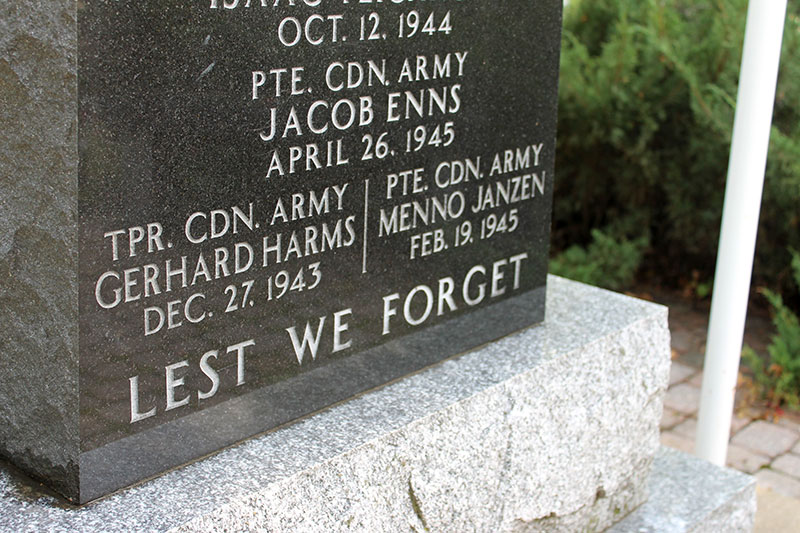

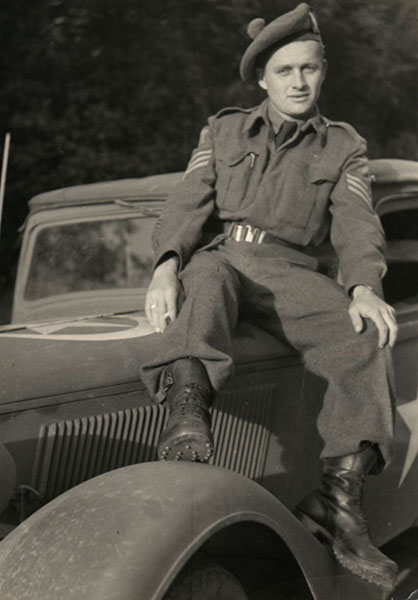
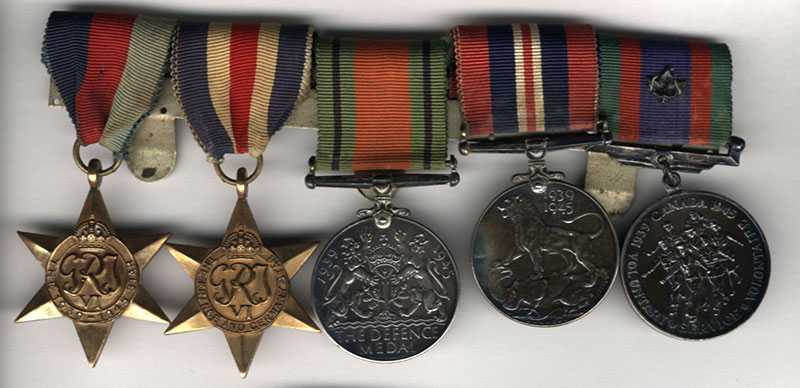
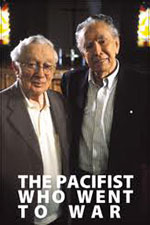
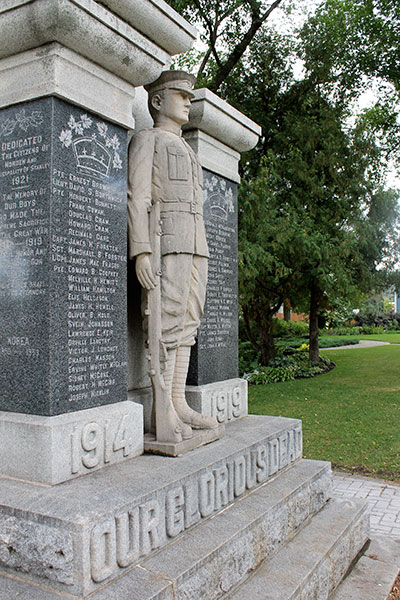




Leave a Reply
You must be logged in to post a comment.